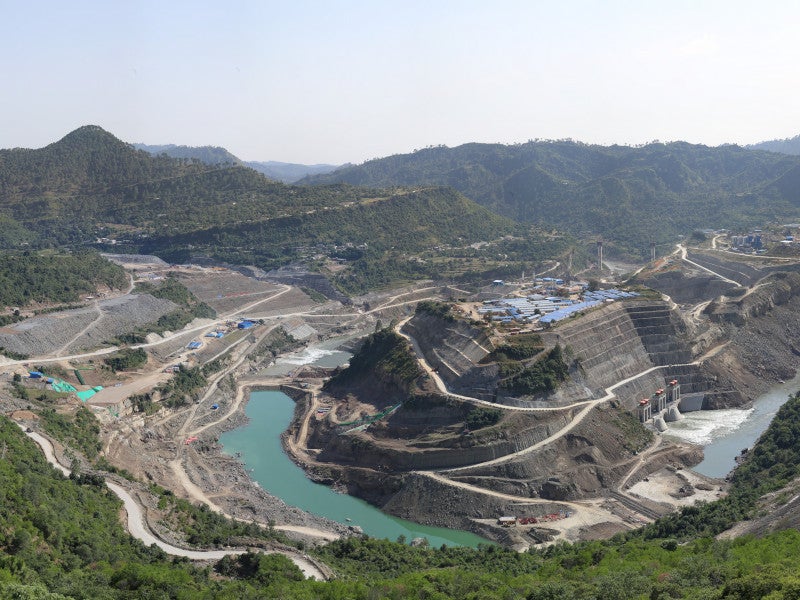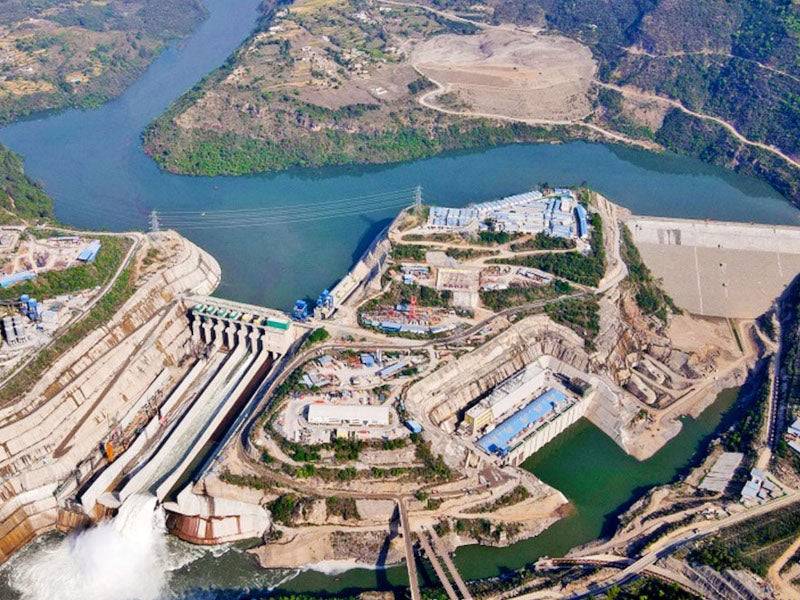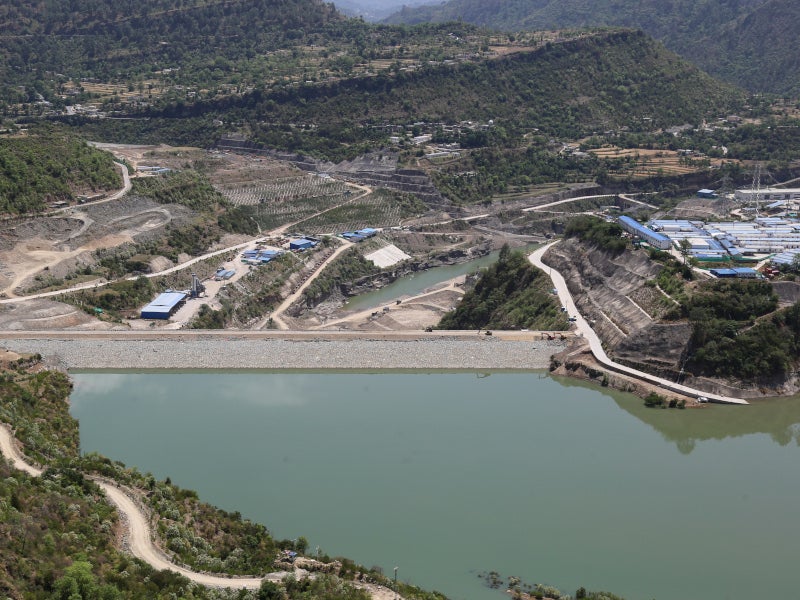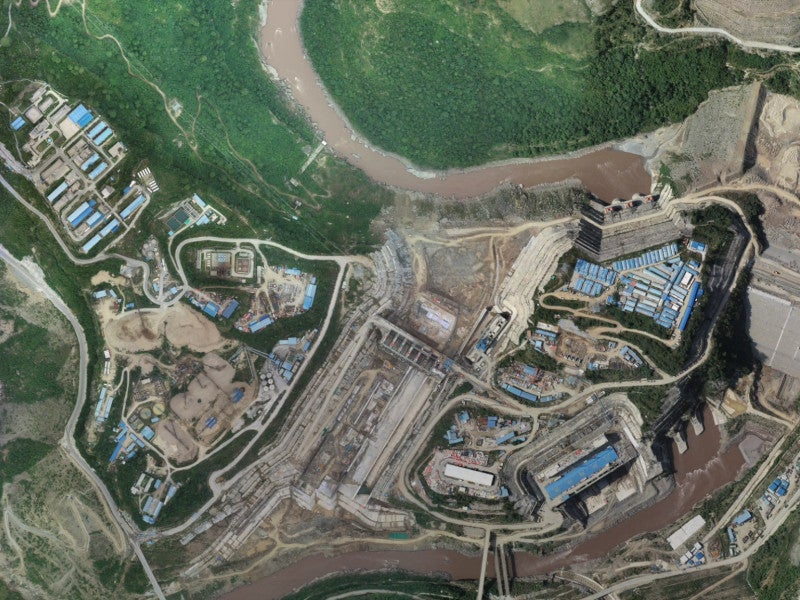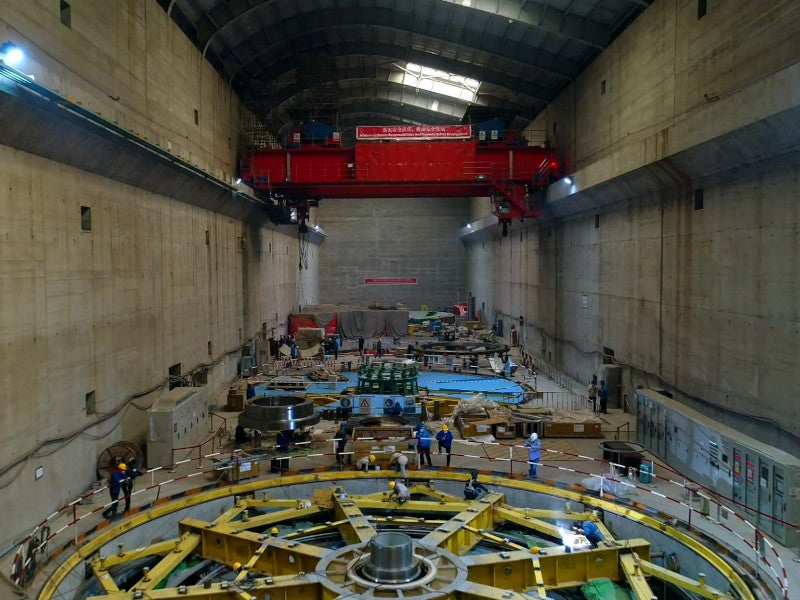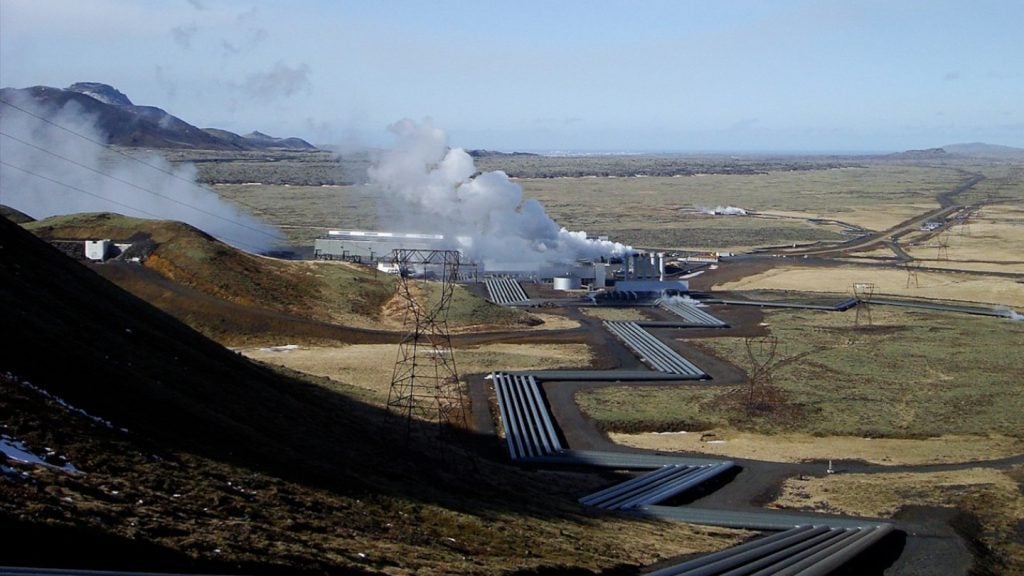The Karot hydropower project (HPP) is a 720MW run-of-river project located on the Jhelum River in the Rawalpindi district of Pakistan. It is the fourth of five cascade hydropower stations developed on the Jhelum River.
The project was developed by Karot Power Company (KPCL), a special-purpose vehicle in which China Three Gorges South Asia Investment (CSAIL) holds a majority share. KPCL is responsible for operating the plant for a period of 30 years, after which ownership will be transferred to the Pakistani Government.
CSAIL was established by China Three Gorges Investments, the overseas intermediary of China’s state-owned China Three Gorges Corporation (CTGC). CTGC was founded to build the Three Gorges Project, which is the world’s biggest hydroelectric power plant with a 22.5GW capacity.
The hydropower project was developed with an investment of $1.72bn. The construction of the Karot HPP began in December 2016 and the project became operational in June 2022.
The Karot power plant can generate 3.2 billion kilowatt hours of clean energy annually, providing electricity to a population of approximately five million people.
The project generated employment for more than 4,000 people during its construction phase. It helps in the reduction of 3.5 million tonnes (Mt) of carbon dioxide emissions a year and reduces the use of 1.4Mt of coal equivalent a year.
Karot HPP location
The Karot dam is located near the villages of Karot in Punjab and Hollar in Azad Jammu and Kashmir (AJK), which is roughly 55km southeast of Islamabad.
The project is a part of the China-Pakistan Economic Corridor initiative, which aims to build a 3,000km-long route between China’s Xinjiang Uygur autonomous region and the Gwadar Port. The route passes through the Karakoram Mountain Range and Pakistan’s Balochistan Province and connects China, Pakistan and the Arab world.
Karot HPP development details
The Environmental Protection Agencies (EPA) of Punjab and AJK approved the environmental impact assessment (EIA) of the run-of-river HPP in 2010 and 2011, respectively.
In January 2015, the 2009 EIA was updated following changes in the project design. The updated EIA was approved in 2015.
Karot hydropower project make-up
The Karot Dam is 95.5m-high, 460m-wide across the Jhelum River. It is Pakistan’s first asphaltic concrete core rockfill dam, as well as the country’s first renewable energy infrastructure project built within the framework of the China-Pakistan Economic Cooperation (CPEC).
The reservoir stretches approximately 27km upstream of the dam and features a capacity of 152 million cubic metres at the full supply level, which is 461m above sea level. The surface powerhouse, consisting of four turbines with a capacity of 180MW each, is situated approximately 650m downstream of the dam crest and 300m upstream of the Karot Bridge.
The project also includes four 316m-long headrace tunnels, a spillway, three 447m-long diversion tunnels and coffer dams upstream and downstream of the main dam. The plant is designed to operate for six months a year.
The plant is interconnected to the national grid through a 5km-long, 500kV transmission line. The power generated is sold to the National Transmission and Despatch Company under a 30-year power purchase agreement.
Financing for the Karot HPP
The Karot HPP achieved financial close in March 2017 with 25% equity and 75% debt. A consortium of Chinese lenders and the World Bank’s investment arm, the International Finance Corporation (IFC), provided the debt funding. Also included is a $100m loan from IFC.
The equity funding is invested by China’s $40bn Silk Road infrastructure fund. The Silk Road Fund signed a memorandum of understanding (MoU) with CTGC and the Pakistan Private Power and Infrastructure Board for financing the project.
As per the MoU, the fund is providing capital and is a major shareholder in CSAIL. Karot HPP is the first investment project to be funded by the Silk Road fund. Export-Import Bank of China led the consortium of financiers for the project.
Contractors involved
Yangtze Three Gorges Technology and Economy Development Company and China Machinery Engineering Corporation consortium were awarded the $1.27bn engineering, procurement and construction contract for the hydroelectric powerplant in 2015.
Pakistan Engineering Services (PES), a planning, architectural and engineering consulting company, updated the 2009 EIA.
IFC evaluated the environmental and social impact assessment (ESIA) report prepared by PES and fulfilled additional resource requirements to make the ESIA meet IFC standards.
KPCL appointed international consultancy company Mott MacDonald UK to further improve the project’s environment and social aspects.
SMEC, a consulting company based in Australia, teamed up with Shanghai Investigation, Design, & Research Institute to act as the employer’s engineer to provide project management, design review and construction supervision services.

